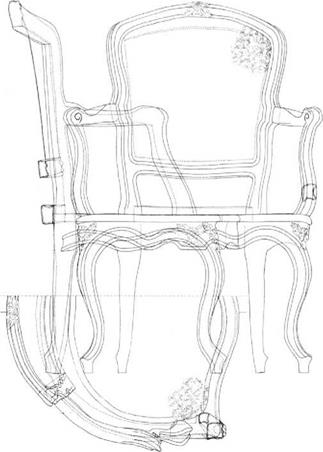The French Rococo period (1715-1774) was a time when important distinctions in an array of trades developed. The following terms identify some of the trades and craftsmen of the French Rococo:
1. Ebeniste: cabinetmaker, working with ebony and a variety of other woods, who made veneered furniture
2. Menuisier: solid wood furniture maker
3. Fondeur: metal mounts maker
4. Ciseleur: bronze casting maker
5. Vernisseur: lacquerer
6. Marqueteur: maker of marquetry
7. Doreur: gilder
It remained a punishable offense for a furniture maker to cross trades. This made it difficult for those who possessed woodworking skills to work outside the boundaries of their primary trade and created a climate for specialists rather than generalists in furniture making. It is remarkable how coherent French furniture was, since so many guilds were involved in the fabrication of one piece. The ebeniste’s job was to unite the efforts of the trades. Between 1743 and 1751, French cabinetmakers were required to stamp their work with their names or initials followed by J. M.E.—jure des menuisiers et ebenistes.
Comfort and convenience became paramount in furniture design during the French Rococo period. Craftsmen at the court of Louis XV created furniture that was smaller in scale but elaborate in ornamentation (Figures 10.30 and 10.31). Within the smaller furniture types
|
|
|
|
of eighteenth-century Rococo, the development of comfort and social posture emerged, marking the beginning of ergonomic design, as well as the rise of gender-based aspects of furniture design. The wives and mistresses of male nobles decided which furniture to buy for their suites within the French courts, and this reality, in conjunction with the growing interest in comfort and social norms of posture and sitting, led to a proliferation of new forms and specialized pieces, and new methods of fabrication. The French Rococo period was significant in this regard and laid the foundation for an emerging interest in extending the realm of furniture into the larger context of leisure, comfort, upholstery, ergonomics, and interior design.





